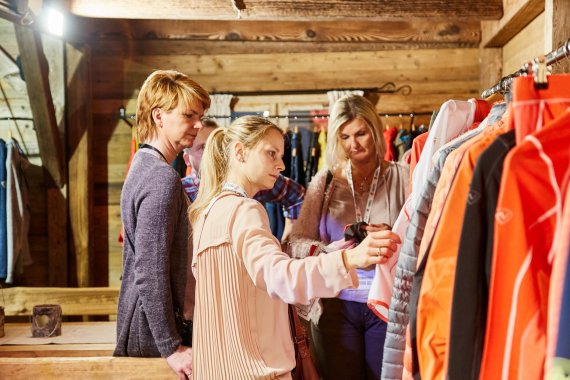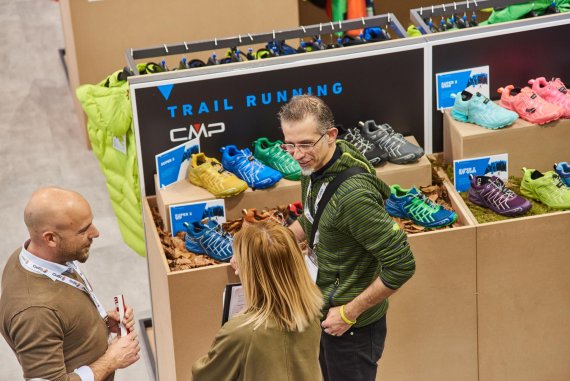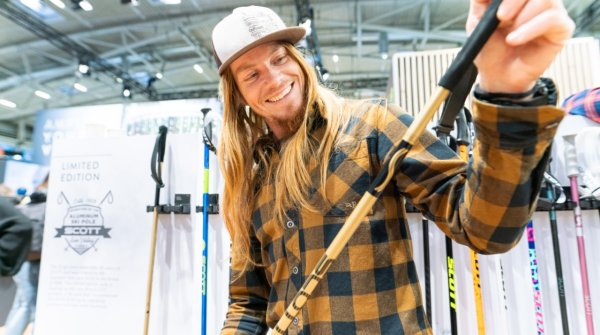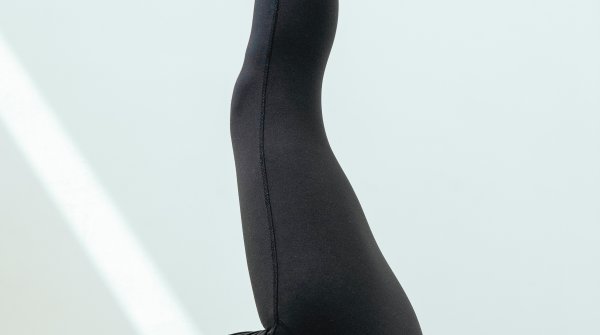
Urs Weber is a running professional. Not one who sets a new personal record every week. But he's someone who's not being outdone by anyone in the scene.
The book author and editor of the German "Runner's World" is a specialist in equipment issues. At ISPO Munich 2017, Urs Weber was on the health and fitness stage for the running presentations and looked into the future of running at the running shoe symposium.
"There continues to be great growth in running," says Urs Weber. "The sport is becoming more and more of a mass phenomenon, is extremely broad-based, and is finding more and more people interested in it from target groups that weren't into running just a few years ago." Who is he referring to? "Students, hip young runners, under-30s who used to be in the gym at best, and even under-20s. Running has just become cool."
And that's especially true for the female target group, whose share of younger runners now makes up "more than 50 percent," according to Weber.

"The running scene is becoming increasingly networked," says "Runner's World" expert Urs Weber, "it's hard to imagine running without social." Of course, some people are still jogging alone in 2018 - but the trend is clearly toward a community experience, for which people arrange to meet via the web.
Urs Weber says, "Many running groups, even the classic ones that got together long before digitalization, now organize their runs via social groups on the Internet."
And not just to meet new people and not run their courses alone - "but because many in these groups also upload and document their own runs on the web," explains Urs Weber. "It's like a kind of diary."
The industry has long since responded to the trend toward digital running documentation. "The app developers have done a great job of enabling everyone to run at a high level," says Urs Weber: "There is almost no manufacturer that doesn't try to reach the running clientele directly via social media.
From Runtastic and Strava, the classics among the odometers, to Nike Running, Polar and Garmin, to small start-ups: there are rather too many good running apps than too few. "Runner's World" expert Urs Weber: "It's more of a problem to get your bearings and find the one right app that's also used in your community."
As a result, interfaces are becoming more important, and the ability to transfer to other networks is a decisive criterion.
The fact that running is now becoming social running also presents retailers with new challenges. Consumers orient themselves online - and then meet offline to run.
Many no longer find their way to the retailer, so retailers have to come to the runner, concludes Urs Weber: "Retailers have to be in contact with the scene. And always be found where the scene is at the moment."
This can be an appearance in the social networks, a booth at large running events such as the marathon fairs or even small local running competitions, or even an on-site visit to the running groups. "Retailers need to show up where the runners are," Weber says, "People don't come into the store on their own anymore."

Of course, the fact that outfitters care much more about the community also means that they show off their products much more transparently. And not just react to trends, but have to set them. "Running has become much more chic," says Urs Weber. "The variety of brands has increased incredibly." It's not just the big outfitters that are setting the running direction, the style.
They are often driven, or at least inspired, by small newcomers. "The smaller outfitters succeed in creating products that allow you to stand out from the crowd," says Urs Weber, citing the Danish trend brand Say Sky, ISPO Brandnew Winner 2016, or ON, which initially established itself in the footwear sector but is now also taking off with cool apparel.
Urs Weber: "The styles are becoming more diverse. And different for each type of running, so that you can differentiate yourself. Trail runners wear different styles than urban runners. That's where specific brands develop their own character for the respective target group."
When it comes to running shoes, no one is fooling Weber; for "Runner's World," he tests many dozens of new models every season. "The number of different models is increasing," says Germany's number one running shoe expert, "but so is the number of shoes worn by a runner. Statistically speaking, every runner in Germany has 5.3 pairs of running shoes."
And this is mainly because they "also take different shoes for different terrains," says Weber. "Many runners have special trail running shoes, winter running shoes, barefoot running shoes and competition shoes in addition to the normal training shoe."
But what does that mean for retailers? "That advice is becoming increasingly important," Weber responds. He sees both opportunities and risks ahead for retailers in view of the great variety of new suppliers as well. On the one hand, online retailing is on the rise, as is the information available online, but at the same time, consumers are looking for personal advice, which they can't get online.

"The retailer has to be able to make a quick diagnosis and then create the individual filter to find the half-dozen models from the huge range on the market that are actually suitable for the particular runner," says Urs Weber. "And the retailer has to see how he can use treadmill analysis and where its limits are, because it is not meaningful on its own."
Urs Weber speaks of a "paradigm shift in running shoe advice - because you don't just look at foot touchdown behavior, you have to pay attention to the entire movement sequence. The running style is individual. There is no ideal. In the past, people thought pronation was harmful. Today we know that's nonsense."
The willingness to spend money on running is growing. Nothing but growth can be expected in 2018 either. This applies to all segments.
This trend is particularly evident in product innovations: The market for wearables is getting bigger and bigger, the selection more and more diverse - but also more and more confusing, especially since tech companies like Apple and Samsung are also pushing into the running market because running is becoming a lifestyle. This, too, presents new challenges for retailers.
"You also have to have the courage sometimes to advise against products that the customer doesn't need or that aren't fully developed," thinks Urs Weber and explains, "Anyone who runs a lot and already has a running watch doesn't need yet another fitness tracker. And many products aren't really fully balanced technically. As a good retailer, you have to make sure that the consumer doesn't suddenly become a product tester."
- Awards
- Mountain sports
- Bike
- Fitness
- Health
- ISPO Munich
- Running
- Brands
- Sustainability
- Olympia
- OutDoor
- Promotion
- Sports Business
- Textrends
- Triathlon
- Water sports
- Winter sports
- eSports
- SportsTech
- OutDoor by ISPO
- Heroes
- Transformation
- Sport Fashion
- Urban Culture
- Challenges of a CEO
- Trade fairs
- Sports
- Find the Balance
- Product reviews
- Newsletter Exclusive Area
- Magazine





